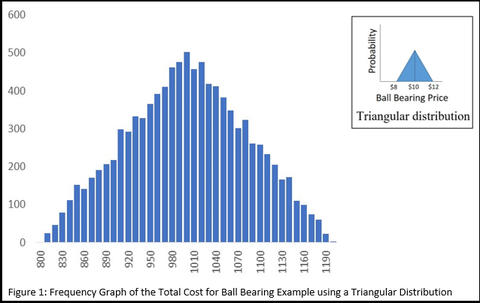Monte Carlo Tool

This tool is used to implement Monte Carlo analysis, which uses probabilistic sensitivity analysis to account for uncertainty. This tool is developed to follow the simulation segment of ASTM E1369. This technique involves a method of model sampling. Specification involves defining which variables are to be simulated, the distribution of each of these variables, and the number of iterations performed. The software then randomly samples from the probabilities for each input variable of interest. Three common distributions that are used include triangular, normal, and uniform.
To illustrate, consider a situation where a firm has to purchase 100 ball bearings at $10 each; however, the price can vary plus or minus $2. In order to address this situation, one can use a Monte Carlo analysis where the price is varied using a triangular distribution with $12 being the maximum, $8 being the minimum, and $10 being the most likely. Moreover, the anticipated results should have a low value of approximately $800 (i.e., 100 ball bearings at $8 each) and a high value of approximately $1200 (i.e., 100 ball bearings at $12 each). The triangular distribution would make it so the $8 price and $12 price have lower likelihoods. For a Monte Carlo analysis, one must select the number of iterations that the simulation will run. Each iteration is similar to rolling a pair of dice, albeit, with the probabilities having been altered. In this case, the dice determine the price of the bearings. The number of iterations is the number of times this simulation is calculated (i.e., the number of times the dice is rolled).
We welcome any comments or suggestions for further developing this tool: douglas.thomas [at] nist.gov
Contact
-
(301) 975-4918

